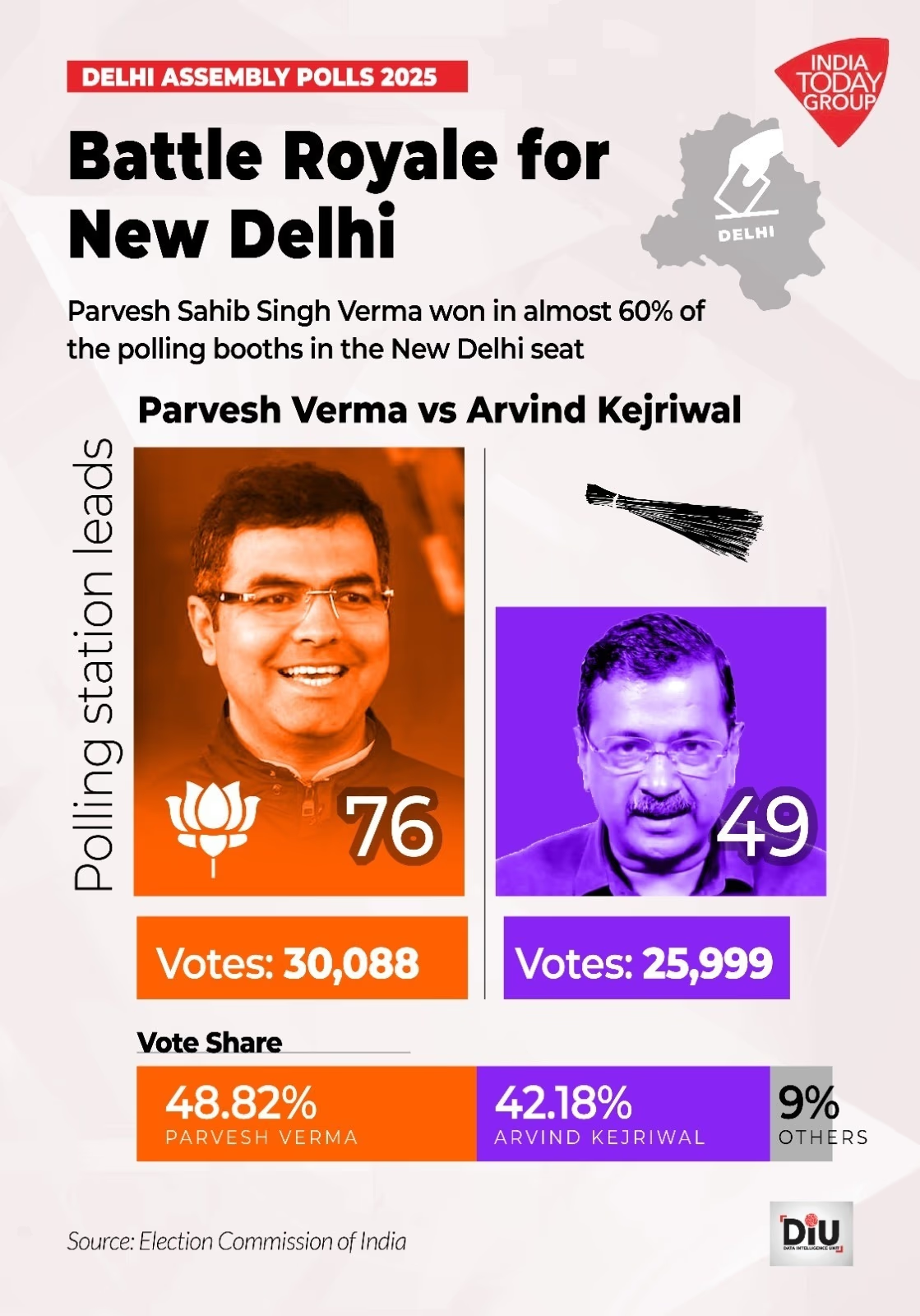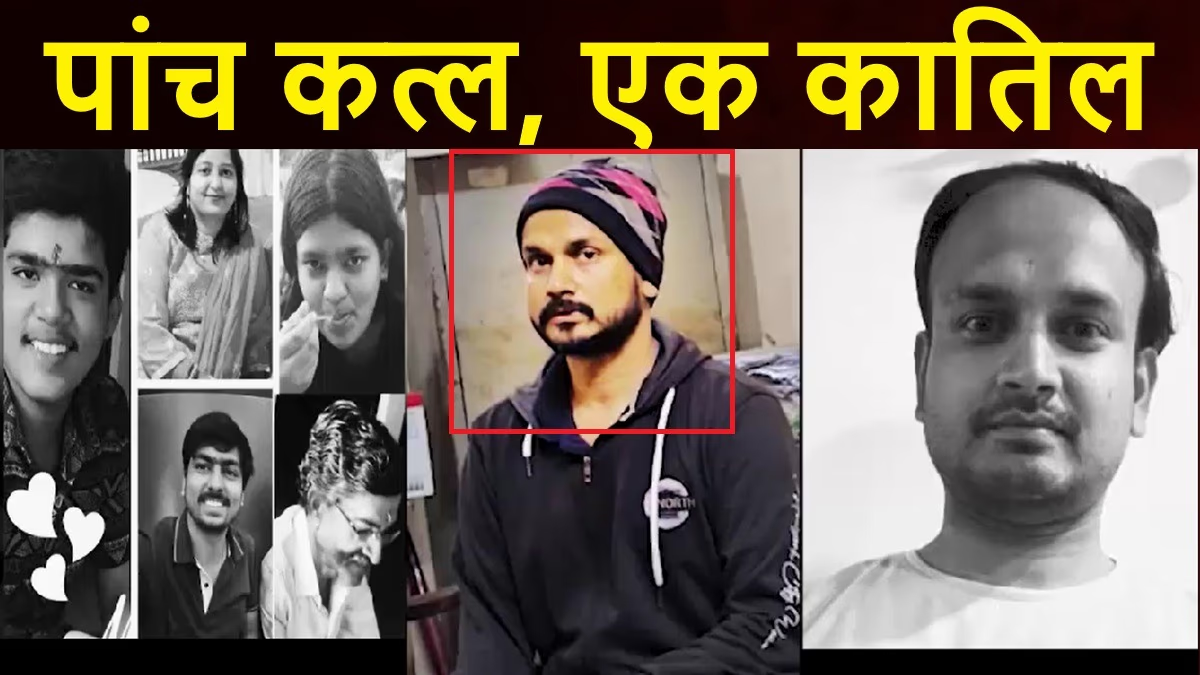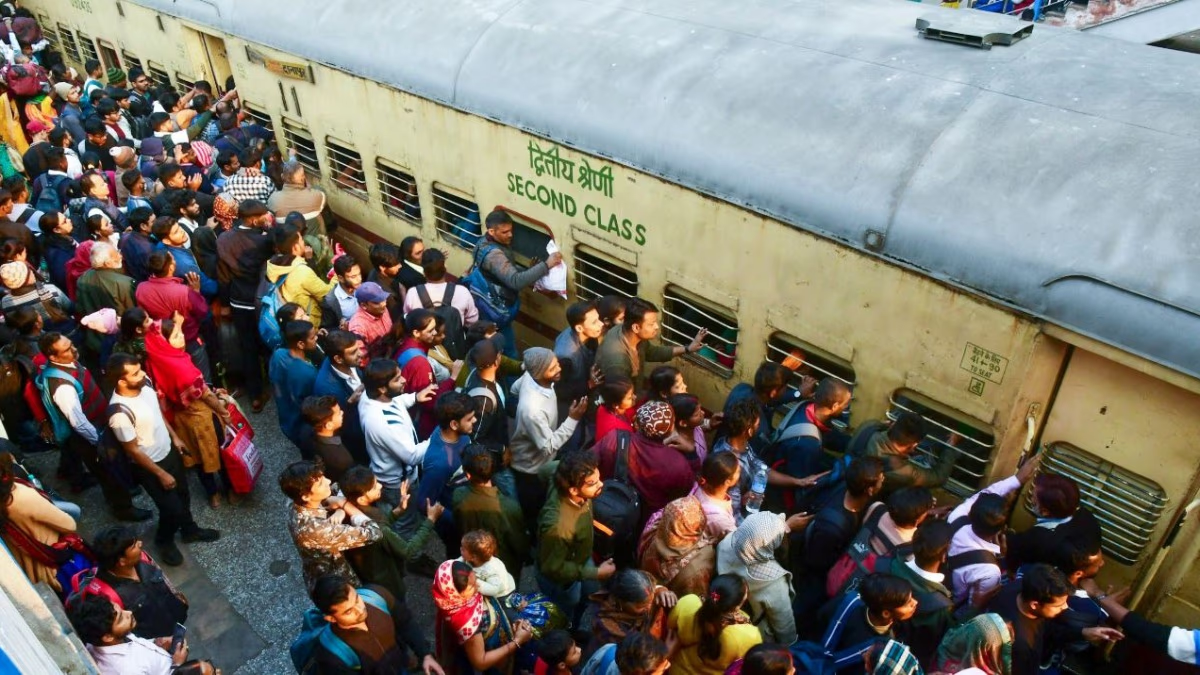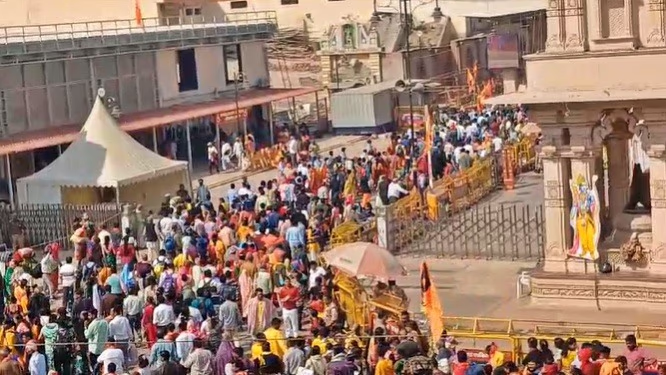The defeat of the Aam Aadmi Party in the Delhi Assembly elections surprised few, yet Arvind Kejriwal's loss on his home turf was indeed unexpected. After being the triumphant force for three consecutive terms in New Delhi's assembly seat, how did BJP's Parvesh Sahib Singh Verma manage this feat? Delving into booth-by-booth analysis provides the answer.
The Political Battle for New Delhi Seat
In this grand contest over the New Delhi Assembly seat, all three major parties fielded their stalwarts. BJP chose the seasoned two-term parliamentarian Parvesh Verma; Congress nominated Sandeep Dikshit, son of former CM Sheila Dikshit, whereas AAP fielded its leader Arvind Kejriwal, who had secured the seat thrice since 2013.
Advantage for Parvesh Verma on Multiple Booths
Arvind Kejriwal found himself trailing Parvesh Verma at majority of polling stations. Out of 123 centers and two auxiliary booths, Kejriwal gained an edge at 49, while Parvesh Verma led in 76, facilitating his eventual victory. Each booth's votes were calculated by subtracting Verma's votes from Kejriwal's. In about 30% of centers, there was a narrow margin of less than 20 votes, showcasing a fierce battle. Although some regions showed Kejriwal’s strength, Verma's firm lead sealed his win. According to election results, Kejriwal received 25,865 votes while Verma obtained 29,878, with postal ballots adding 134 to Kejriwal and 210 to Verma.

Source: aajtak
How Did BJP Secure Its Win?
Through a straightforward strategy, BJP enhanced booth management and extended its voter outreach, marking a significant presence in roughly 60% of the booths. The party devised a vigorous plan to ensure victory in this seat, facing the full might of the Aam Aadmi Party’s campaign for its national convener.
Also read:
BJP concentrated on booths with potential wins and deployed leaders from various states for promotion. The party realized that a straightforward candidate vs. candidate scenario would favor Kejriwal's chances. Thus, BJP tactically executed its covert plan, resulting in Verma receiving less than 50% of the total votes yet leading in 60% of the booths. This approach was to aim for more booths, despite not having a massive edge in all of them.




